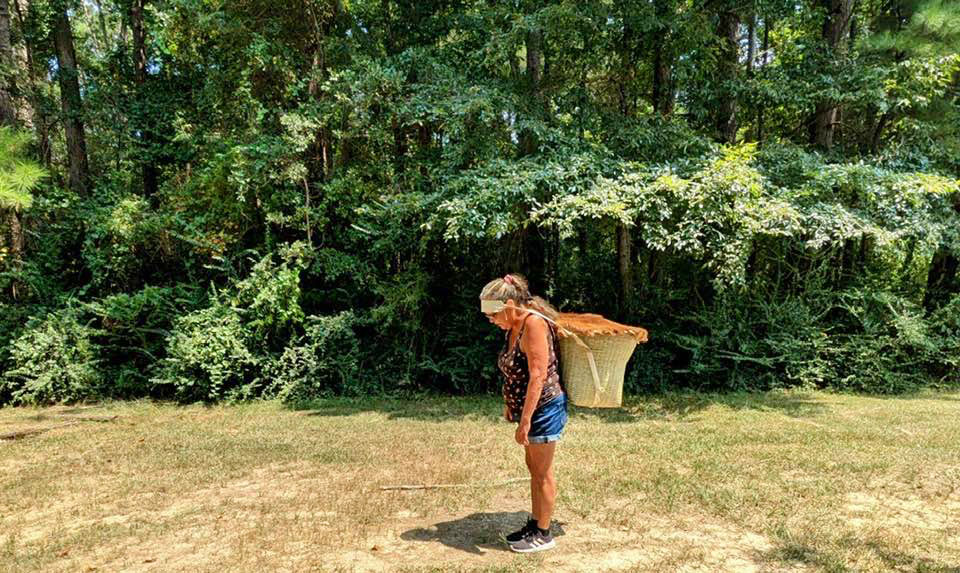The burdens that these baskets carry - A rivercane reflection
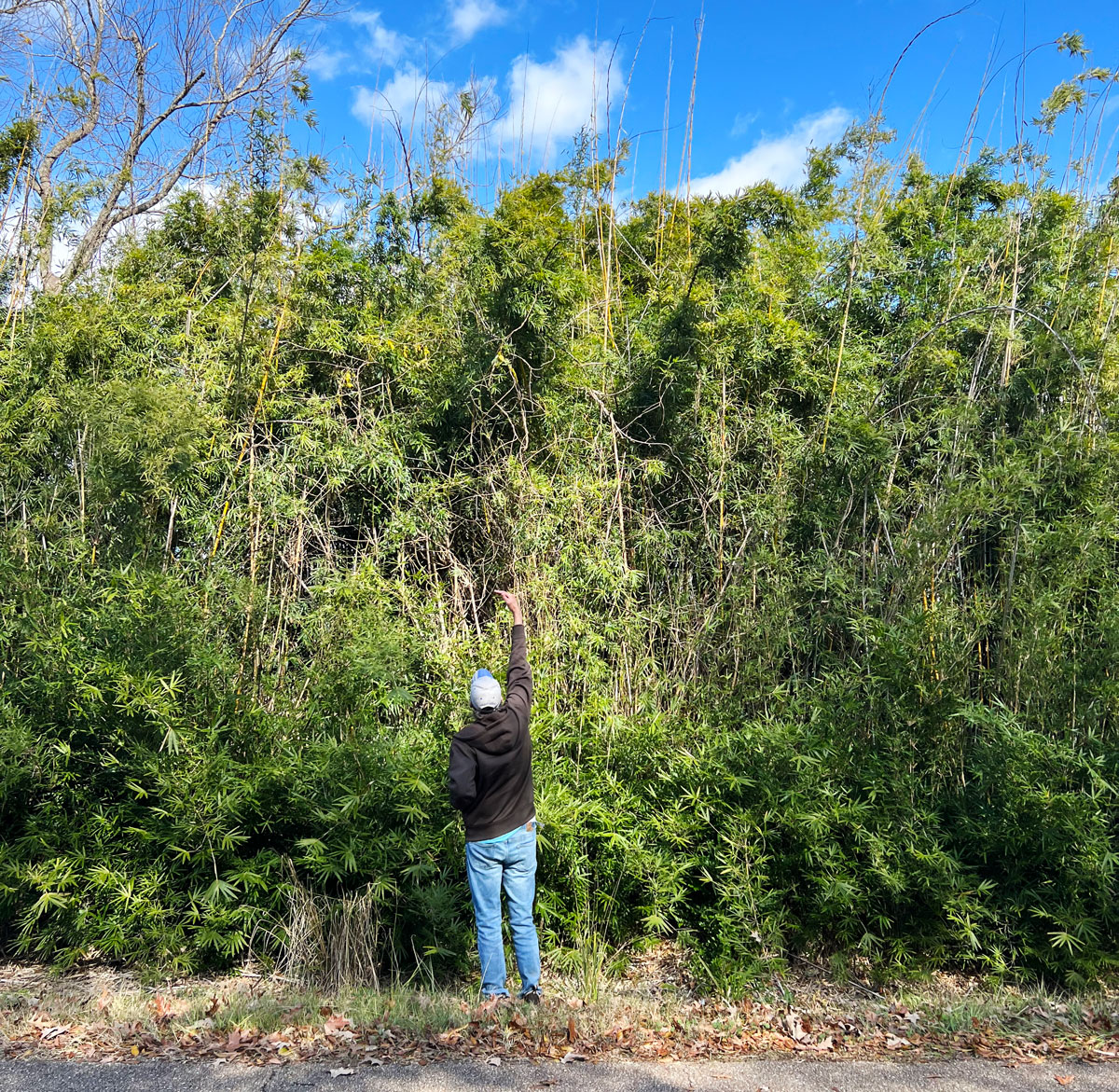
Sometimes we take for granted the burdens that others carry. Some of these burdens can be visible and others invisible, yet, whether large or small, all contribute to the weighted shoulders of the people bearing heavy loads. My time in the military taught me that an individual person can carry more than they should on their own back. This is often why soldiers will work together as a squad to distribute the load among the team—ensuring that no single person has more than they can carry. This often takes many hands. Many late nights or early mornings begin with sleepy fingers securing straps and moving items on a rucksack in the dark. You do this as a team to help load several hundred pounds of gear onto the shoulders of your mates as they check to make sure your pack is secured well behind you. This may be the point in this reflection where you think, what does this have to do with rivercane? Well, as I have learned in my ongoing restoration work in the Southeastern United States, this amazing plant has a history of helping carry and support the burdens of many Indigenous people in the region.
Rivercane (Arundinaria gigantea) is one of several native bamboo species found in watersheds across the Southeastern region of the United States. Once so dense, you had to travel miles to navigate a horse around it, “cane brakes” are now almost entirely gone as ecosystems. What cane remains is only a shadow and a patch of the former lush bamboo forests and grasslands that sustained the landscape. As a plant, rivercane can clean water, filter the air, provide erosion control, and improve soil quality. As an ecosystem, rivercane stands can provide critical wildlife habitats, micro-climate refuges, natural fire breaks, wildlife corridors, and a sustainable source of material for communities that traditionally depend on them.
Where did they all go, you may ask? The giant cane brakes were largely cleared by European colonists for agriculture and utilized as winter fodder for grazing cattle. As the colonists cleared the cane from the lands, the fertile soil that remained was quickly occupied to grow crops and cattle for the colonizers. European land surveyors would note giant cane brakes as a source of potential food for livestock and future farmlands during regional surveys to promote the economic opportunity of the “untapped land”. As Indigenous people began to be pushed from the most “productive” landscapes, their traditional conservation of and relationship with these important ecosystems became disconnected, as the colonizers shared a different value system in relation to these ecosystems—viewing them as an impediment rather than a source of sustainment and regeneration for the land and its people.
Several weeks ago, I had the good fortune to attend a workshop sponsored by the U.S. Fish and Wildlife Service to better understand the potential for rivercane ecosystems to support bird habitats. The workshop was held in Tuscaloosa, Alabama and organized by the CONSERVE (Community Oriented Nature-based Science for Ecosystem Restoration and Versatile Engineering) research group and the Rivercane Restoration Alliance at the University of Alabama Water Institute. A key feature of the workshop was the attendance of many Tribal representatives who held long ties to the landscapes we discussed—with rivercane relationships dating back thousands of years. The inclusion of these representatives was not an accident. The workshop organizers understood that Indigenous communities are stewards of knowledge passed down and awakened over many generations (sometimes referred to as Traditional Ecological Knowledge, or TEK). Although native cane ecosystems disappeared faster than the newcomers to the land could appreciate, Indigenous groups keenly feel and recognize their loss. During the workshop, elders explained how rivercane served a vital role in the daily lives of Southeast Tribes for the spiritual, material, and relational needs of their communities and lifeways.
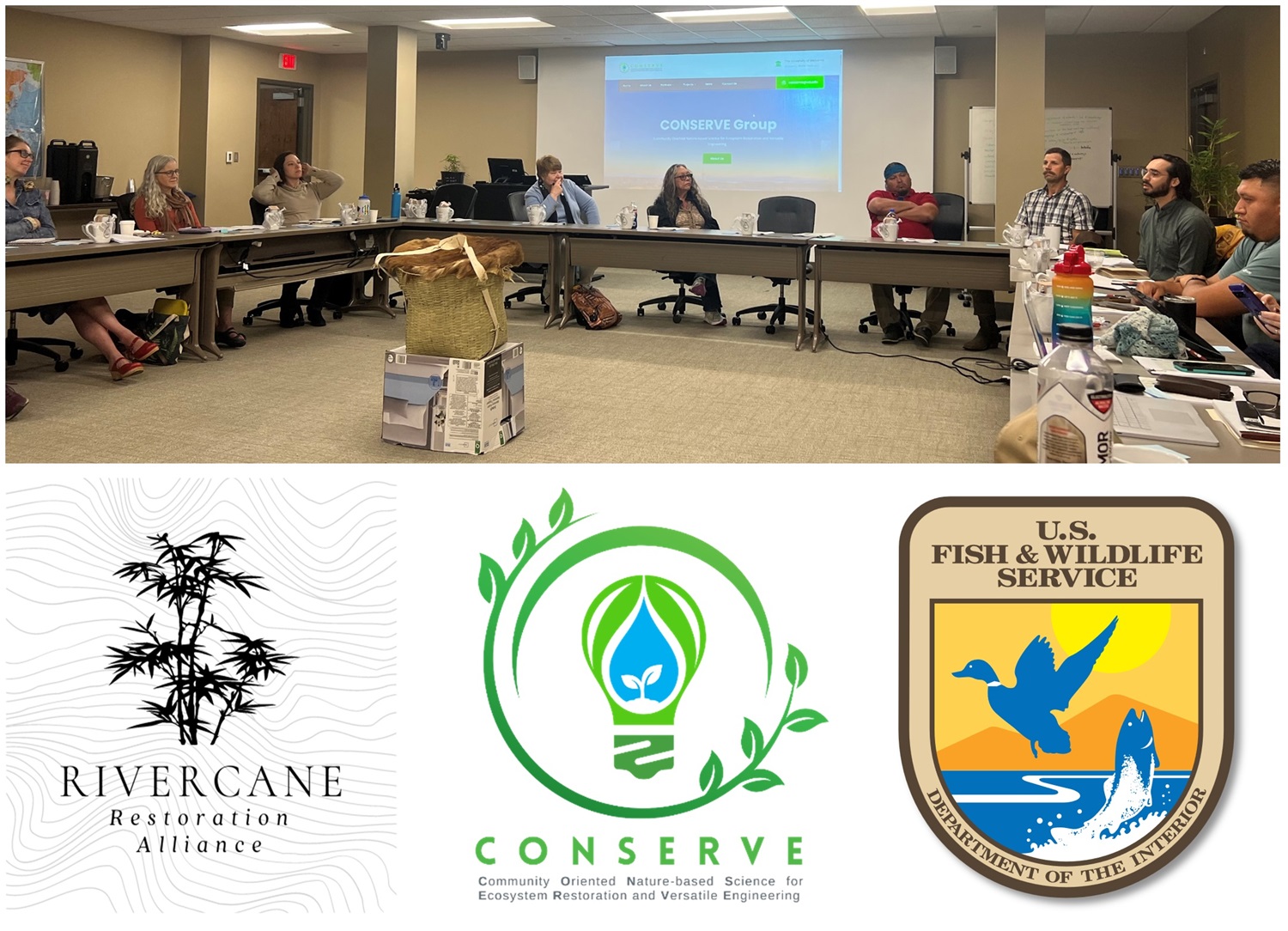
One of these many relationships is exhibited by the weaving traditions of Indigenous basket makers. These baskets served many functional needs of the community from sifting grains to carrying large burdens. For example, a skilled Choctaw artist can identify the right time of year, correct age class, appropriate stem diameter, stand health, and harvest technique to gather the right cane for the right basket. This generational knowledge goes beyond art into intimate relationships with the rivercane ecosystem. Elders at the workshop described the impacts that loss of the rivercane ecosystems had on this knowledge transmission from generation to generation, often resulting in negative impacts to the community. Some Tribal members described the loss and decline of several key bird species due to the loss of vast cane brakes—highlighting other relationships and key stewardship responsibility challenges faced by past, present, and future generations of the Tribe.
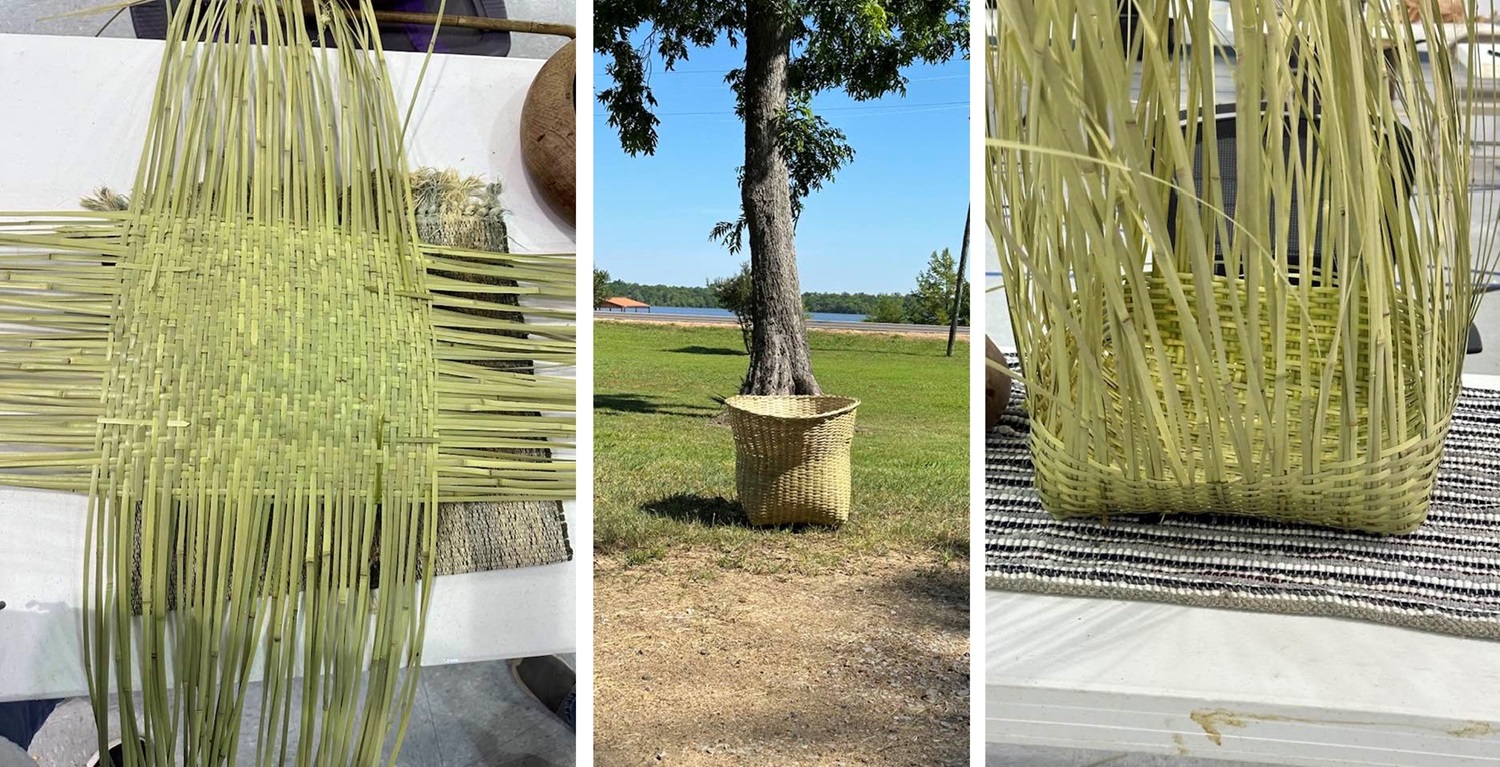
As we began listening to these testimonies on the value of native rivercane as an ecosystem and a cultural keystone species, a ray of hope began to shine. With new partnerships forming and a younger generation of Indigenous cane stewards being empowered, Tribal TEK has been awakened from its slumber to shine a light toward a bright path of rivercane conservation within the Southeastern United States. One Tribal elder, Ms. Rose Fisher of the Jena Band of Choctaw Indians in Louisiana, has waited 60 years to teach her community to weave a traditional burden basket. The following is a brief description of her journey.
Mr. Tom Colvin of Mandeville, Louisiana had learned the Jena Band style of weaving from some elders when he was a child. As a non-Tribal citizen, Tom was charged by his Jena Choctaw mentors to pass the knowledge back to the Tribe at the appropriate time. Years later, the art of weaving disappeared within the Jena Band of Choctaw in Louisiana. As this knowledge slept, Rose found in Tom a willing teacher and together, the Jena Band awakened the art of weaving. Even with the knowledge to weave, Rose still faced many challenges as the amount of rivercane of basket quality available to the Tribe was severely limited. For example, the Choctaw style burden basket required Rose to search across three states and identify the type and amount of native rivercane needed to complete the project. Undaunted, Rose continued weaving and teaching others for fifty years until her dream of completing this basket style was fulfilled. Below are a few pictures of the Jena Band of Choctaw’s journey with Rose as the guide.
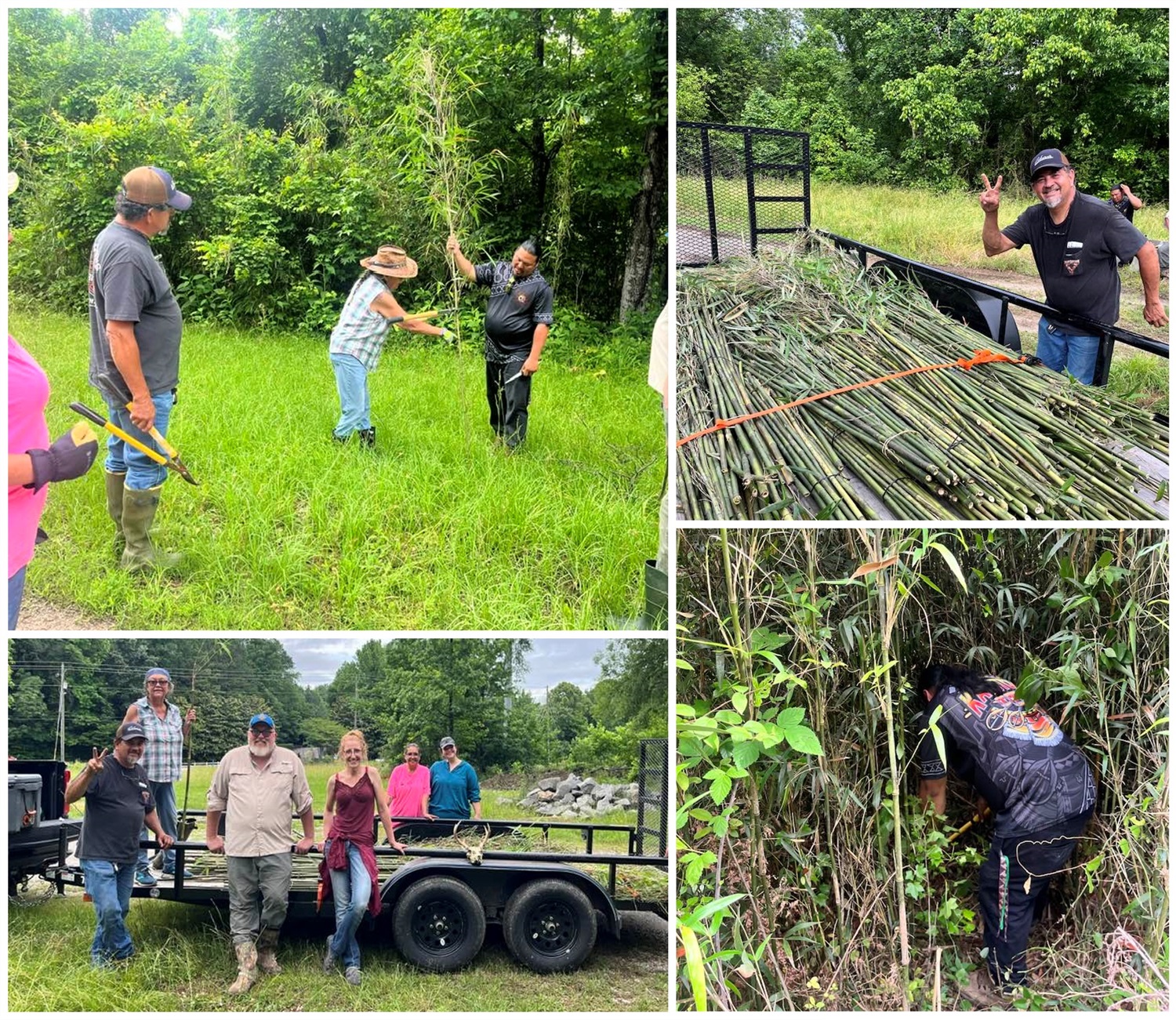
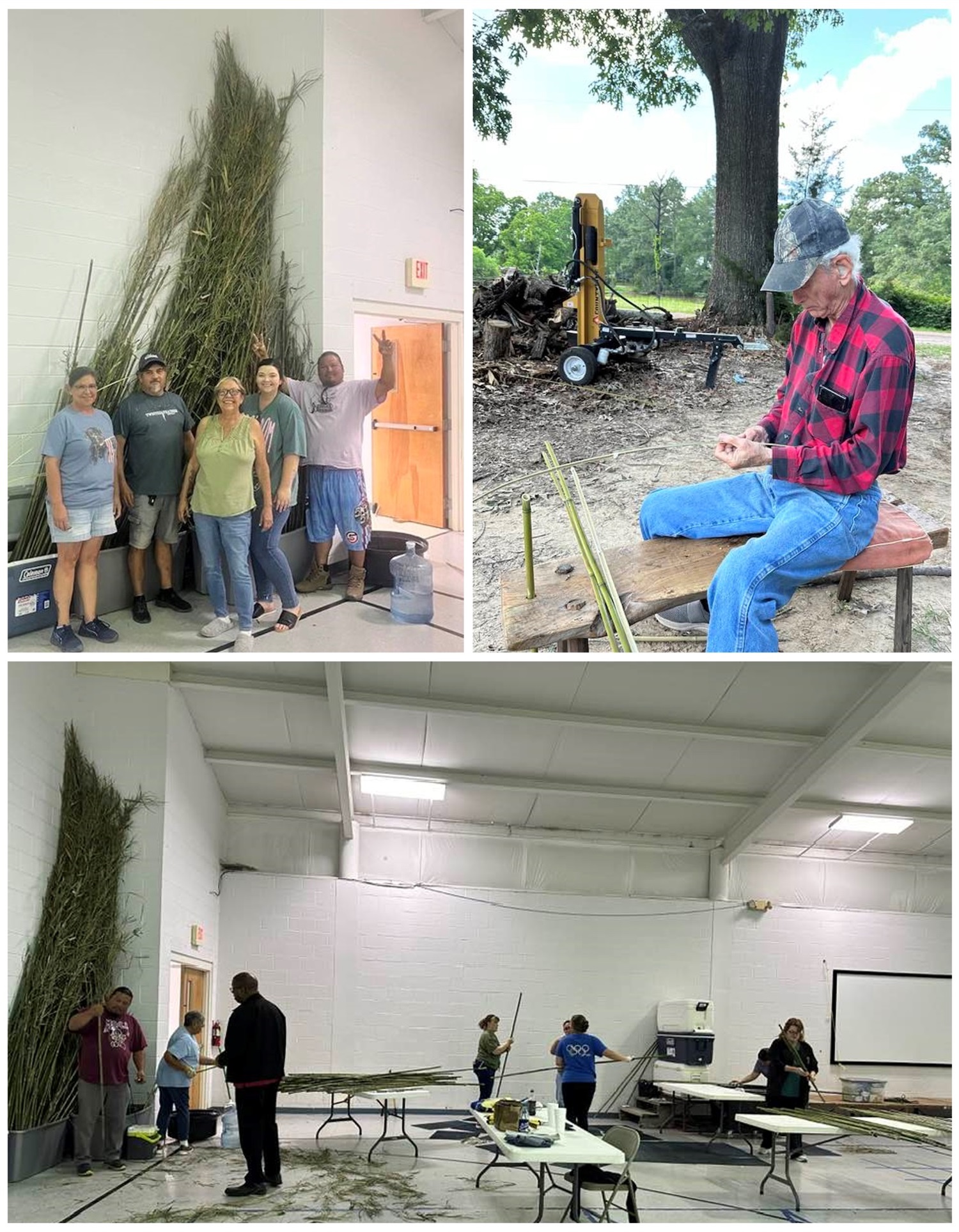
After the workshop was over, bird experts and rivercane conservationists came away with a better understanding of the importance of native rivercane as a cultural keystone species. Even though traditional ecologists may think little is known of this rare ecosystem, the workshop demonstrated that a deep source of TEK still exists. However, much remains to be done together to ensure that this knowledge awakens at a time and place appropriate to emerge.
This powerful story highlights how conservation and community intersect to make stronger ecosystems for everyone, and upon reflection, it seems to me, at least, that rivercane continues to carry our burdens. Though perhaps less visible, it still cleans our water, gives shelter to our birds and animals, stabilizes our creeks, and provides for the cultural lifeways of a resilient group of communities across the landscape. Hopefully, the few remaining cane stands and small brakes that remain will be respected and nurtured to awaken rivercane relationships across the Southeast.
